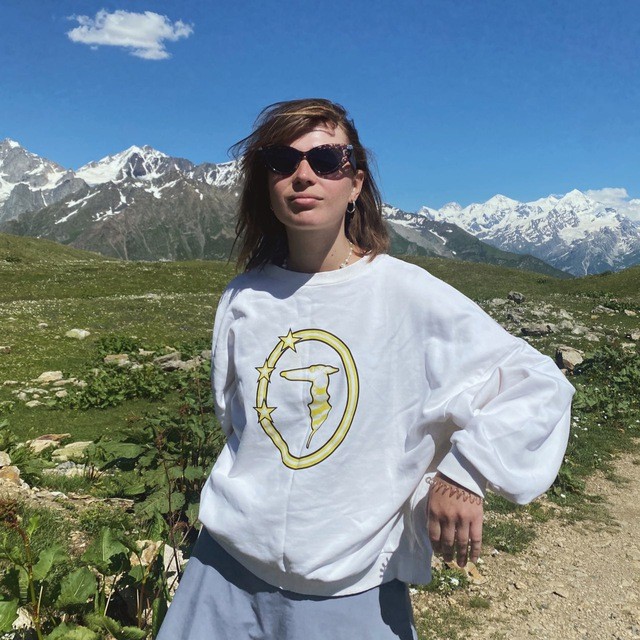In early-stage startups, design is rarely the first priority. Founders focus on product, funding, speed — and design often becomes a “later” task.
But visual consistency is not decoration — it’s infrastructure. It’s what keeps your brand recognizable across every pitch, landing page, or pop-up.
At Free World Agency, we treat visual systems as the invisible architecture of a brand. And one of our recent startup collaborations, Cybee, perfectly shows how a clear visual framework can connect complex tech with human understanding.
What a Visual System Includes
A brand’s visual consistency isn’t about having a single logo file — it’s a system that creates harmony across all expressions.
Here’s what it should include:
Logo & variations — different formats for digital, print, and spatial applications.
Color palette — core and accent colors with clear emotional logic.
Typography — hierarchy, rhythm, tone.
Graphic language — icons, shapes, or patterns that tell your story visually.
Imagery style — photography, illustration, and how you treat them.
Tone of voice — words and visuals should sound like they come from the same source.
Motion & interactivity — if it moves, it should still “feel” like your brand.
Spatial and digital touchpoints — how your brand lives both online and offline.
Useful tools to build your system:
• Coolors (color palettes)
• Fontpair (typography pairing)
• Khroma (AI-based color choices)
• Recraft (logo and pattern generation)
• Muzli (design inspiration)
• Figma Variables (systematizing design logic)
Step One: Building the Moodboard
Every brand system starts with intuition — and moodboards help translate that intuition into direction.
When we began working with Cybee, an AI cybersecurity startup, we created a moodboard around clarity, intelligence, and connection.
We combined references from architecture, digital grids, minimal interfaces, and motion graphics, all united by one feeling — “security without fear.”
We wanted users to feel trust and simplicity, not intimidation by complexity.
For investors, however, the mood was bold and futuristic — communicating innovation and confidence through vivid color and dynamic contrast.
This moodboard wasn’t just for internal alignment — it became a visual compass for every decision we made later, from palette selection to typography.

Case: Cybee — Two Visual Identities, One Core System
Cybee had two audiences:
Users — people who needed to understand a complex product quickly.
Investors — who needed to feel the innovation and uniqueness behind it.
Our goal: build two visual languages that speak differently, but stay connected under one system.
A. Color Logic
We explored multiple palette directions — from quiet neutrals to full-spectrum bold (see image set).




For investors: we chose bright, saturated colors, representing energy, progress, and confidence.
This palette stood out visually in pitch decks and instantly communicated that “this startup is different.”
Our goal: build two visual languages that speak differently, but stay connected under one system.
A. Color Logic
We explored multiple palette directions — from quiet neutrals to full-spectrum bold (see image set).




For investors: we chose bright, saturated colors, representing energy, progress, and confidence.
This palette stood out visually in pitch decks and instantly communicated that “this startup is different.”


C. Graphic Metaphors
Cybee’s visual system uses network-inspired patterns, like webs and nodes — metaphors for connectivity, flow, and protection. These elements visually represent the product’s core: behavioral cybersecurity built on data interconnections.
We initially tested dynamic motion graphics but removed them later — simplicity made the message stronger.
As we often say: If your product is complex, your visuals should simplify, not compete.

For users
D. UX & UI: Translating the Visual System into User Experience
Once the visual foundation was defined, we brought it to life through UX and interface design. The main challenge for Cybee was clarity — how to explain a complex cybersecurity product in a way that even a non-technical user could instantly understand.
We simplified navigation, reduced cognitive load, and prioritized content hierarchy.
Every visual decision — from spacing to typography size — supported comprehension, not decoration.
For users, the interface became a tool for understanding: minimal distractions, clean layouts, predictable interaction patterns. For investors, the same framework translated into a stronger visual story during product demos — intuitive flows that visually reinforced the idea of “intelligence made simple.”
The UX/UI layer completed the visual system — turning design logic into a tangible experience people can use and trust.
For users




For investors


E. Application & Results
For investors, the vibrant visual system helped Cybee’s decks and website stand out immediately in competitive funding rounds.
For users, the restrained palette and clear design improved understanding and trust — “I get what this does and why it matters.”
The visual consistency also made internal communication easier: every team — from marketing to product — worked from the same design logic.
Practical Guide: Build Your Own Visual System
Here’s how to apply the same logic to your startup:
Create a moodboard — define what emotions and archetypes you want your brand to express.
Identify your audiences — what should each one feel?
Build your color logic — assign meaning to every shade.
Choose your typefaces — define hierarchy and tone.
Create graphic metaphors — shapes, icons, or textures that reinforce your message.
Test across touchpoints — web, packaging, presentations, retail, and events.
Document it all — your brand guideline is a visual playbook for the future.
Final Thought
Visual consistency doesn’t limit creativity — it organizes it.
When done right, your brand stops being a sum of visuals and becomes an experience people can feel.
And for startups like Cybee, that consistency doesn’t just make your brand look coherent — it makes it believable.




